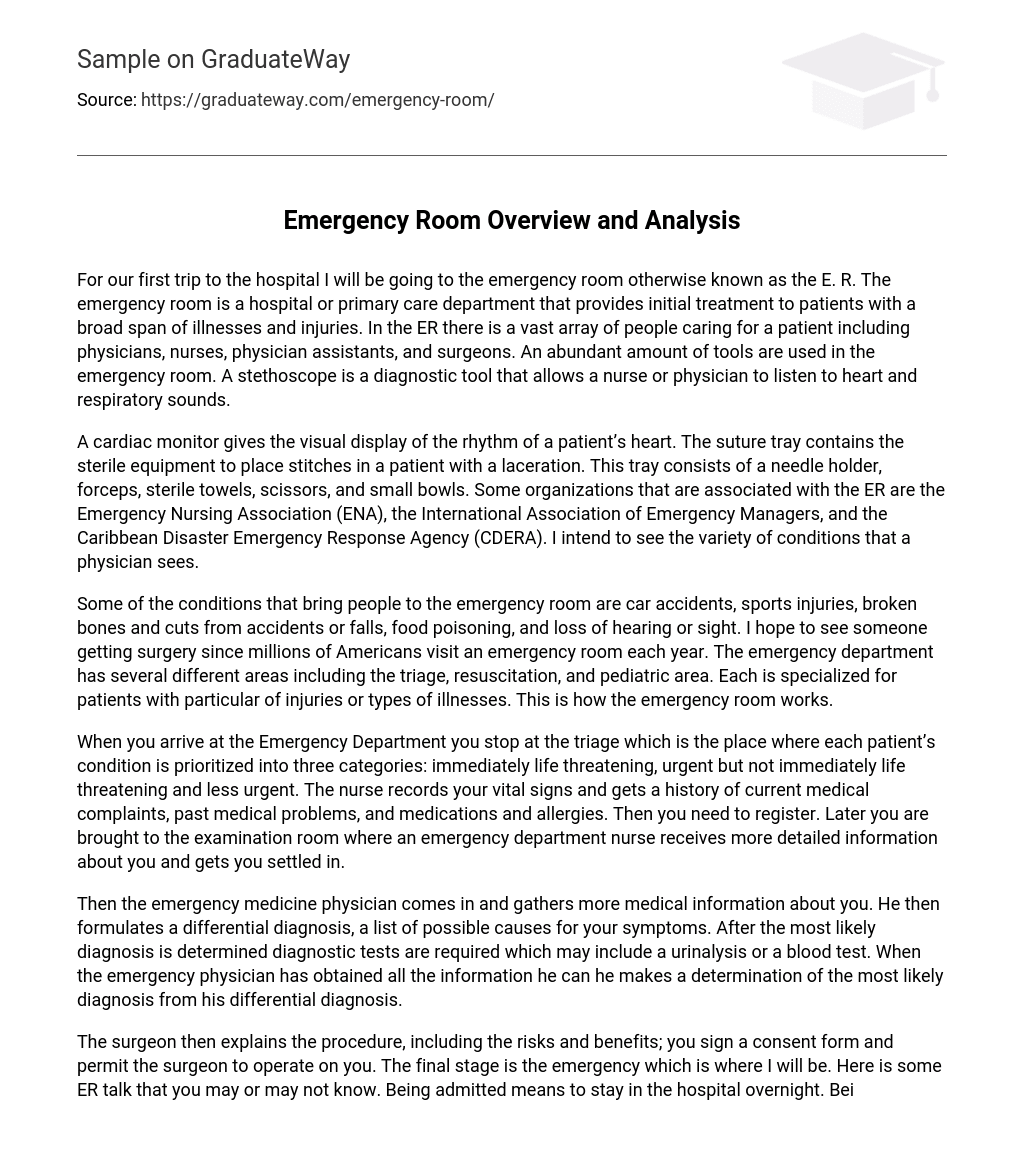Our first hospital visit will be to the emergency room, also referred to as the E.R. This department provides primary care for patients with a variety of illnesses and injuries. It is staffed by a team of healthcare professionals including doctors, nurses, physician assistants, and surgeons. In the emergency room, various tools are used such as the stethoscope which allows nurses or doctors to listen to heart and respiratory sounds.
A cardiac monitor is used to display a patient’s heart rhythm visually. The suture tray contains sterile equipment including a needle holder, forceps, sterile towels, scissors, and small bowls, which are all necessary for repairing a patient’s laceration. The ER works closely with organizations such as the Emergency Nursing Association (ENA), the International Association of Emergency Managers, and the Caribbean Disaster Emergency Response Agency (CDERA). My objective is to observe the various conditions that physicians encounter.
The emergency room is utilized by individuals for various reasons, such as car accidents, sports-related injuries, fractures, cuts from accidents or falls, incidents of food poisoning, and impaired hearing or vision. It is not uncommon to find someone undergoing surgery in the emergency department due to the large number of Americans who visit each year. The emergency room operates with specialized sections like triage, resuscitation, and pediatric areas that cater to patients with specific conditions.
When patients arrive at the Emergency Department, they are directed to the triage area. Here, their condition is assessed and placed into one of three priority levels: immediate life-threatening, urgent but not immediately life-threatening, or less urgent. During this process, a nurse records vital signs and collects information about the patient’s current medical issues, past medical history, medications, and allergies.
After triage, patients then go through the registration process before being taken to an examination room by an emergency department nurse. This nurse gathers more detailed information and ensures that the patient is comfortable during their time in the examination room.
The emergency medicine physician will gather additional medical information about you and create a list of potential causes for your symptoms, known as a differential diagnosis. To confirm the most likely diagnosis, diagnostic tests like urinalysis or blood tests may be necessary. Once all relevant information is collected, the emergency physician will identify the most probable diagnosis from the list of possible causes.
The surgeon explains the procedure, its risks, and benefits, while you authorize the operation by signing a consent form. I will be present during the subsequent emergency phase. Some common ER terms are as follows: “Being admitted” refers to staying overnight at the hospital, while “being discharged” means being sent home. A papoose is a soft board with Velcro straps that immobilizes limbs so doctors can administer stitches or treat injuries without patient movement. The term “stat” signifies an urgent need for action.





